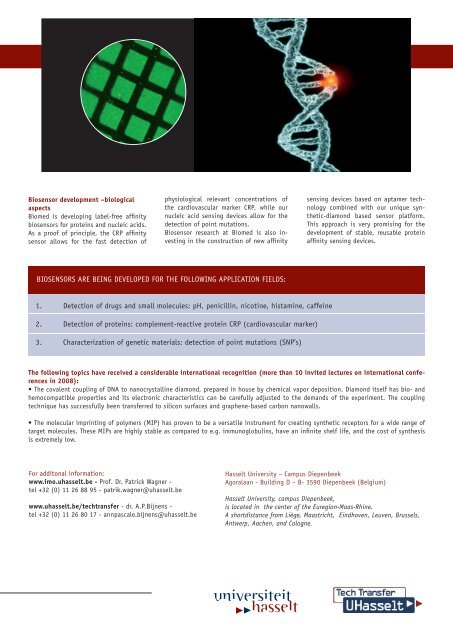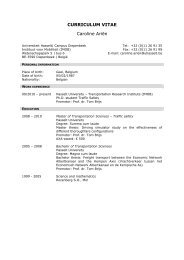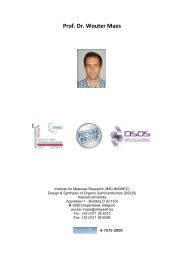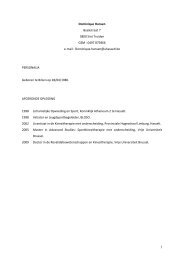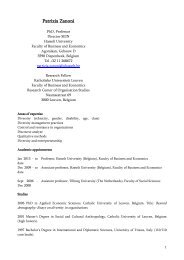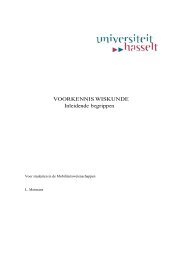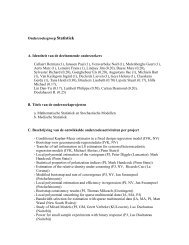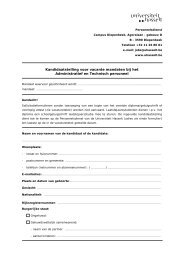Biosensors - UHasselt
Biosensors - UHasselt
Biosensors - UHasselt
Create successful ePaper yourself
Turn your PDF publications into a flip-book with our unique Google optimized e-Paper software.
Biosensor development –biological<br />
aspects<br />
Biomed is developing label-free affinity<br />
biosensors for proteins and nucleic acids.<br />
As a proof of principle, the CRP affinity<br />
sensor allows for the fast detection of<br />
physiological relevant concentrations of<br />
the cardiovascular marker CRP, while our<br />
nucleic acid sensing devices allow for the<br />
detection of point mutations.<br />
Biosensor research at Biomed is also investing<br />
in the construction of new affinity<br />
sensing devices based on aptamer technology<br />
combined with our unique synthetic-diamond<br />
based sensor platform.<br />
This approach is very promising for the<br />
development of stable, reusable protein<br />
affinity sensing devices.<br />
<strong>Biosensors</strong> are being developed for the following application fields:<br />
1. Detection of drugs and small molecules: pH, penicillin, nicotine, histamine, caffeine<br />
2. Detection of proteins: complement-reactive protein CRP (cardiovascular marker)<br />
3. Characterization of genetic materials: detection of point mutations (SNP’s)<br />
The following topics have received a considerable international recognition (more than 10 invited lectures on international conferences<br />
in 2008):<br />
• The covalent coupling of DNA to nanocrystalline diamond, prepared in house by chemical vapor deposition. Diamond itself has bio- and<br />
hemocompatible properties and its electronic characteristics can be carefully adjusted to the demands of the experiment. The coupling<br />
technique has successfully been transferred to silicon surfaces and graphene-based carbon nanowalls.<br />
• The molecular imprinting of polymers (MIP) has proven to be a versatile instrument for creating synthetic receptors for a wide range of<br />
target molecules. These MIPs are highly stable as compared to e.g. immunoglobulins, have an infinite shelf life, and the cost of synthesis<br />
is extremely low.<br />
For additonal information:<br />
www.imo.uhasselt.be - Prof. Dr. Patrick Wagner -<br />
tel +32 (0) 11 26 88 95 - patrik.wagner@uhasselt.be<br />
www.uhasselt.be/techtransfer - dr. A.P.Bijnens -<br />
tel +32 (0) 11 26 80 17 - annpascale.bijnens@uhasselt.be<br />
Hasselt University – Campus Diepenbeek<br />
Agoralaan - Building D – B- 3590 Diepenbeek (Belgium)<br />
Hasselt University, campus Diepenbeek,<br />
is located in the center of the Euregion-Maas-Rhine.<br />
A shortdistance from Liège, Maastricht, Eindhoven, Leuven, Brussels,<br />
Antwerp, Aachen, and Cologne.


